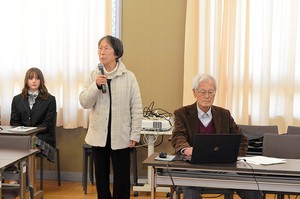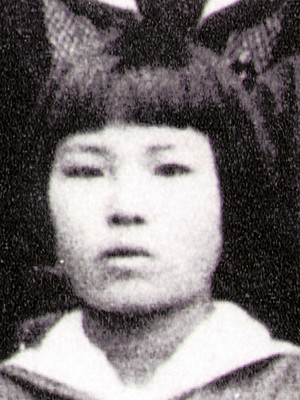By FUMINA OKA/ Staff Writer
February 16, 2024 at 07:00 JST
YAO, Osaka Prefecture--A male clerk appeared bewildered as he appraised used products that customers had brought in at a worktable behind the purchasing counter.
“My head is swimming with question marks all over,” he said.
The staffer was handling a set of six dolls at the Super 2nd Street outlet in Yao, Osaka Prefecture, where used articles are purchased and resold, on a recent day in early December.
The set included approximately 30-centimeter-tall “Peko” dolls representing Fujiya Co.’s popular mascot character.
One wore Peko’s hallmark coveralls, whereas another was dressed, like a high school girl, in a blazer and a beige checkered skirt. The dolls each came in a transparent bag but carried no explanatory notes.
The worker carefully studied the soles of the shoes, the insides of the clothing and other parts to find clues as to when the dolls were released, which company released them and whether they are popular with collectors.
The staffer found that the dolls were not particularly rare, so he priced them at 250 yen ($1.68) each.
‘LOCAL CONSUMPTION OF LOCAL PRODUCTS’
Eligible for valuation at the Yao outlet are a wide range of articles, including clothes, musical instruments and furniture, which do not fall under legal trading restrictions. Unlike new articles, the used products have no suggested retail prices.
The outlet’s workers turn to an in-house database for records of the previous purchases of similar products, which, however, are not always available.
Values may change with demand of the time, such as when pieces of furniture or musical instruments of the sort that has appeared in an anime suddenly gain popularity and appreciate.
To stay abreast of the trends, the staffers study flea market apps and auction websites to gather information on a daily basis, officials said.
On display for sale at the outlet are more than 100,000 pieces of used articles, ranging from a stationery item worth only 50 yen to a luxury brand watch carrying a price tag of 449,900 yen.
Some 90 percent of those articles were bought at this shop of the 2nd Street chain.
“What we are doing is precisely ‘local consumption of local products,’” said Ryo Nakagawa, a chain representative.
The reuse market has been growing rapidly.
Figures compiled by Recycling Tsushin, a trade newspaper covering the reuse industry, show the market value grew from 1.1 trillion yen in 2009, when statistics were first available, to 2.9 trillion yen in 2022.
The newspaper has projected the figure will rise to about 4 trillion yen in 2030.
2nd Street Corp., the Nagoya-based operator of the reuse shop chain, now has more than 800 outlets across the nation, including the one in Yao, more than double the corresponding figure from a decade ago.
CONSUMERS EMBRACING REUSING GOODS
In the backdrop is a change in consumer awareness.
A 38-year-old man, who had come to the Yao outlet to resell baby gates to the shop, said he brings disused articles here about twice a year to coincide with a general cleaning of his home.
“I previously didn’t believe they would ever fetch anything,” the man said. “But we now have this outlet nearby and it would be a lot of work to dump them.”
He had bought the baby gates at 40,000 to 50,000 yen when he had a child five years ago. They were now resold for 1,500 yen.
A woman in her 60s, who was trying on a pair of black pumps at the outlet, said that mass consumption was the order of the day in her youth, which coincided with Japan’s asset-inflated economic growth of the late 1980s.
“I now feel that reuse is so important,” she said, adding that she has acquired the habit of sorting things out when she plans to dispose of them into items that can be resold and those that should be trashed.
“The phrase ‘What a waste!’ previously meant, ‘Why are you going to dispose of these items?’” said Yasuo Kogure, president of Uridoki Inc., which operates a website on which users can compare suggested purchase prices for used articles. “The connotation is now changing to, ‘Why don't you find out the value of what you have?’”
Flea market apps and other similar tools have taken root, which has rendered it convenient to look up the prices of used articles and has turned people’s eyes toward the value of daily goods, Kogure added.
A survey taken in 2022 by the Environment Ministry showed that 30 percent of the respondents said they had bought at least one used item during the past year. Younger people were more active in purchasing used products, the study found.
PURCHASES MADE WITH CASH FROM RESALE
Consumers have also come to weigh new and used articles on an equal footing and choose either option depending on the occasion.
“What matters in shopping is how you strike a balance,” said a 49-year-old man, who bought a pair of skis for his 10-year-old child at the Yao shop. “I choose to buy some articles new and others secondhand.”
The man said he usually buys his child's playthings secondhand because the child is growing fast and has changing interests. The skis set him back about 1,500 yen on the day he was interviewed.
“A pair of new skis would have cost at least 10,000 yen,” he said. “The money I’ve saved can be spent on another skiing trip.”
An 18-year-old woman, who was looking for a down jacket from a famous brand, said that, when she wants to buy something, she first looks for it on flea market apps and then searches for it at used-product shops and, finally, at outlets selling new products.
“I take into account various factors, such as price differences and the conditions of used products, to decide where I will buy what I want,” the woman said.
A new way of thinking, in addition, has emerged.
A 2023 survey by the Mercari research institute, run by flea market app operator Mercari Inc., showed that 26 percent of the respondents said they had bought something on the assumption that they could afford to buy it only if they resold their belongings.
The corresponding ratio was about 40 percent among members of Generation Z, defined in the study as those aged from 18 through 24.
“The act of buying something with the anticipated cash from reselling something has been common when it comes to cars and houses,” said Hikaru Yamamoto, a Keio University professor of business and commerce, who supervised the survey. “That practice has now spread to daily goods as well. Part of the consumer market has come to view consumable goods as assets.”
The Yao outlet remained crowded at 9 p.m., including with young customers stopping by on their way home from work.
A 23-year-old man who was checking out at the cashier's desk, who said he is a native of China, was seen holding a compact platform cart that had been purchased by the shop only a day earlier. The man said he was planning a self house move.
“This cart is just the right size and appears easy to handle,” he said. “I will use this one to carry a refrigerator on.”
So went another day at the secondhand outlet, with disused articles being purchased for fresh use by somebody else.




















A peek through the music industry’s curtain at the producers who harnessed social media to help their idols go global.
A series based on diplomatic documents declassified by Japan’s Foreign Ministry
Here is a collection of first-hand accounts by “hibakusha” atomic bomb survivors.
Cooking experts, chefs and others involved in the field of food introduce their special recipes intertwined with their paths in life.
A series about Japanese-Americans and their memories of World War II